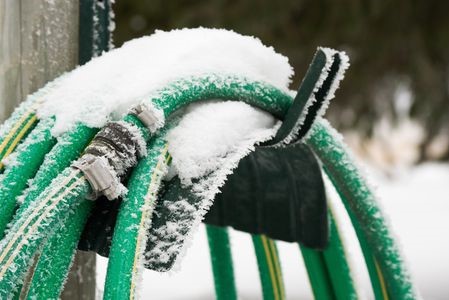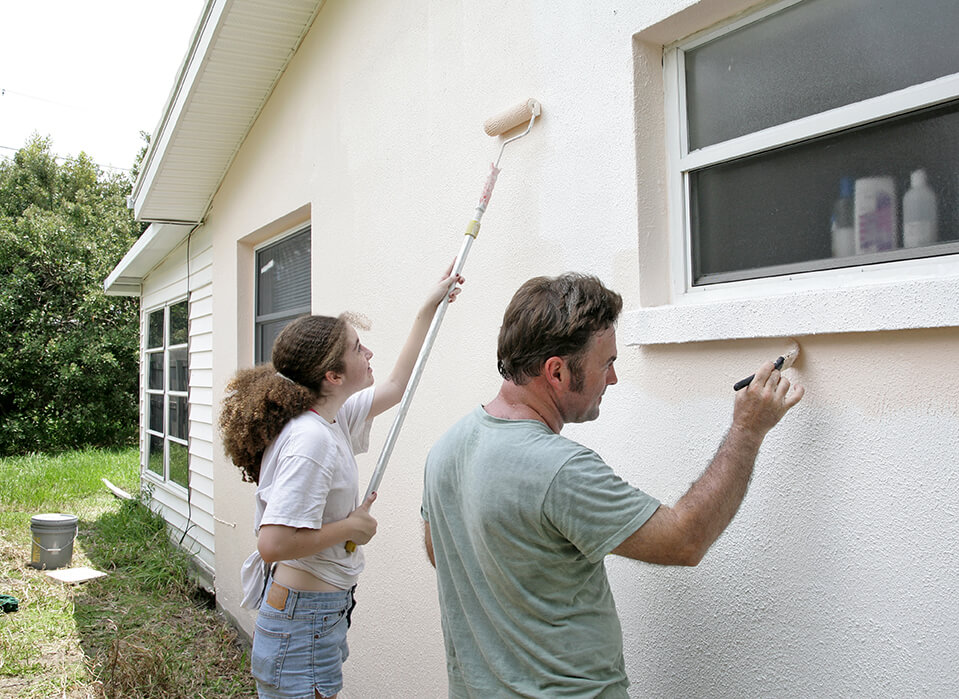
9 Ways to Love Your Home This Winter
So I have a confession
Long before Brian and I started our Home Inspection business we were newly weds with a typical busy schedule (babies, kids, and two full time working parents takes up a lot of hours each week, am I right?) We would do the basic seasonal upkeep on our old 1913 craftsman home like changing furnace filters and cleaning out gutters. But looking back, we didn’t prioritize maintenance like we should have. As Brian’s career path steered him in and around homes (home insurance, home improvement, and then home inspection) he would constantly see the end result of lack of maintenance. This hindsight perspective has gradually shaped our seasonal to – do list over the years because we realized that proper home maintenance
Saves you Money
Keeps your Home Running More Efficiently
Protects one of your Biggest Financial Investments
These three reasons are why we overemphasize home maintenance to our clients not only during the inspection but also with quarterly emails long after (We know you’re busy. That’s why we send little seasonal reminders to your inbox). If you are anything like me, knowing why a task is important helps decide how to prioritize it in your schedule. If you are a pro at home maintenance then this article may not be for you. But if you think you could use some refreshers, read on to learn why these maintenance items are important and why you should carve out some time in your calendar this winter.
Cleaning the Dryer Vent
Not all lint gets removed by the lint trap. Excess lint collects in the dryer duct work over time restricting airflow and eventually overheating the vent. When this happens:
- Your clothes take much longer to dry and will be hot to touch
- The dryer gets overheated because it is working so hard (increasing your energy bill by up to 30%)
- Your laundry room feels humid creating an environment that is conducive to mold and mildew
- The outside vent flap may not close all the way inviting small animals into a nice warm cozy home
- It could eventually get so hot that it could ignite the highly flammable lint and cause a house fire
There are dryer vent cleaning kits available at your local home improvement store
This project will take around 1 hour
Cleaning a Dryer Vent Tutorial
Ceiling Fans
Switching your fan blades to spin clockwise in the winter can pull cold air up towards the ceiling and redistribute the warm air down to where you are sitting. This can save you money on heating cost, since the amount of energy used to run a fan is considerably less than the amount of energy to run an HVAC unit. (Environmental and Economically Approved)
Tutorial On Switching the Direction
Furnace & Furnace Filter
Most furnace maintenance for a typical homeowner is outsourced to a HVAC professional (once a year is recommended, though I think most of us probably fall short of that) If it has been awhile since your last tune up, consider scheduling one while it’s still in good working order. In the meantime you can locate the gas valve. You do not want to be hunting for this in the event of an emergency. Inspect the burner flames. Blue = good to go. Yellow or Orange = you have a problem that needs addressed.
Keeping up with your furnace filter is as important as the air you breathe. Filters assist in
- Extracting excess moisture and controlling the humidity in the house
- Cleaning out dirt, dust, and allergens from the circulating air in the house
- General airflow. Dirty filters block airflow and require your furnace to work harder
How often should you change your filter? General guidelines are:
- Home with no pets: every 90 days.
- Home with one pet: every 60 days.
- Home with more than one pet or people with allergies/asthma: every 20-45 days
Gas Furnace Maintenance Tutorial
Drain your Water Heater
If you’ve never drained or flushed your water heater, you are not alone. But unless you love freezing cold showers or leaking water heaters, this project may be worth your while. Over time, minerals and sediment from your water supply can naturally settle at the bottom of the tank. When this happens:
- The sediment can act like a layer of insulation between the burner mechanisms and the water
- This will interfere with burner efficiency causing your heater to work harder to do less causing increased energy bills and an overheated tank
- An overheated tank may cause cracks in the protective lining which could allow rust to form
- Rusting could lead to a water leak/water damage to your home
You will need a garden hose for draining
This project will take several hours
Draining a Water Heater Tutorial
Interior Window Weather Sealing
The caulking or glazing around older wooden windows can crack with age. Newer vinyl windows can have worn out weather sealing. Either way, it can lead to:
- Cold winter drafts coming into your living space
- Moisture creeping into these crevices causing water damage (think foggy windows)
- Excess moisture that can and will lead to growth of mold
Fixes range from plastic wrap to caulking.
Inspect Safety Devices
Smoke Alarms
Smoke alarms are one of the most important safety features in your house. They should be installed on every level of the home and outside of sleeping areas either on the ceiling or on a wall close to the ceiling. To save yourself some headache, place them at least 10 feet away from a bathroom with a shower (the steam can set it off) or from the stove top (unless you like to announce dinner with the piercing sound of the smoke alarm). It is estimated that only 50% of homes have smoke alarms and an even fewer percentage test them. Testing smoke alarms is important because
- Smoke alarms older than 10 years do not work as effective if at all
- Dust and cobwebs can collect in the unit and can hamper it’s ability to detect smoke
- Insects can nest inside and reduce it’s functionality
Carbon Monoxide Alarms
Carbon Monoxide can come from multiple sources including furnaces, gas generators, space heaters, water heaters, gas stove/range, and motor vehicles (attached garages). High levels can cause serious health side effects so monitoring the levels in your dwelling is important (especially if you have little ones at home). The reasons for testing carbon monoxide alarms are very similar to the smoke detectors except that these alarms usually have a much shorter life span of about 2 – 5 years.
Sealing Gaps in Exterior
Cracks or gaps can be found on the exterior of your house around windows, doors, foundation walls, and brick veneer. These gaps can
- Let in rain water causing mold and rot
- Allow pests to enter your home
- Cause costly heat reducing drafts
Using a sealant to close these gaps will help waterproof your home and keep you warmer in the cooler weather
Winterize the Hose Bib (exterior faucet)
A hose bib is the external faucet or “spigot” that most homeowners use for their garden hose. Winterizing includes detaching the hose, turning off the water supply, and covering the faucet . Omission of these tasks before the temperatures drop to freezing can lead to
- Water left in the hose bib could freeze, expand, and crack the pipes
- If the crack is behind drywall on a cooler exterior wall, you could have water damage in between the walls of your house
- If the crack is above ceiling in a finished basement, you could have water damage on the ceiling and in the room
Tutorial on winterizing exterior faucets
Set aside time with every change of season to do maintenance
It’s not the most enjoyable way to spend your Saturday afternoon. We understand why these items fall to the bottom of the to do list. But we also believe that little fixes throughout the year can save you time and money in the long haul. Protect one of the largest financial investments in your lifetime, and put your home sweet home fixes in the calendar before it fills up!
Written By Carolyn Lander
Cellar Door Home Inspection



